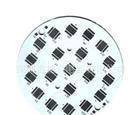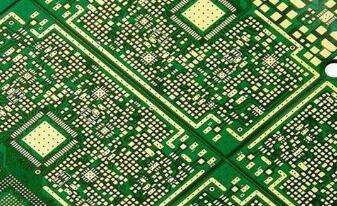The PCB boards used in LEDs are generally aluminum substrates. Why do you choose aluminum substrates for LED chip processing? What are the advantages and disadvantages of aluminum substrates? Introduce the basic knowledge and advantages and disadvantages of aluminum substrates.

1. Introduction to aluminum substrate
Aluminum substrate is a kind of metal-based copper clad laminate, which has good heat dissipation function. The ordinary aluminum substrate has a three-layer structure, which is a metal base layer, an insulating layer and a circuit layer (copper foil). The aluminum substrates designed for some high-end products are double-sided, and the structural layers are circuit layer, insulating layer, aluminum base, insulating layer, and circuit layer. Multi-layer aluminum substrates are very rare.
2. The difference between aluminum substrate and ordinary PCB board
Aluminum substrate is also a kind of printed circuit board. The main difference between it and the circuit board is aluminum alloy, and the material of ordinary circuit board is glass fiber.
3. The reason why the aluminum substrate is used for the LED patch
When the LED lamp is working, it will generate a lot of heat. Therefore, the heat dissipation problem must be considered when designing the circuit board of the LED lamp. The biggest feature of aluminum substrate is fast heat dissipation, so the circuit board used for LED lights is mainly aluminum substrate.
4. Advantages and disadvantages of aluminum substrate
Advantages of aluminum substrate:
1. It is more compliant with LEDPCB processing technology;
2. Extremely effective treatment of thermal diffusion in the circuit design plan, thereby reducing the operating temperature of the module, extending the service life, and improving the power density and reliability;
3. Reduce the assembly of radiators and other hardware, reduce product volume, and reduce hardware and assembly costs;
4. Replace the fragile ceramic substrate to achieve better mechanical durability.
Defects of aluminum substrate:
1. Higher cost.
2. At present, the mainstream can only make single-sided panels, and it is difficult to make double-sided panels.
3. The products made are more prone to problems in terms of electrical strength and withstand voltage.
The aluminum substrate can handle the technical difficulties of LED patch processing, but its defects also limit its development.
With the widespread implementation of lead-free PCB soldering and the wide application of tin sinking in high-reliability boards, especially automotive boards, the proportion of tin sinking surface treatment is rising, so you have a better understanding of the surface treatment of sinking tin The characteristics are very important to ensure the reliability of the tin plated parts. This article refers to a large number of Shenxi materials, and based on actual experience, gives a more detailed introduction to the relevant quality characteristics of Shenxi, and also gives the improvement methods for Shenxi-related quality defects, hoping to enable readers to better understand Shen tin and control the quality of Shen tin.

Principle of tin sinking The tin sinking reaction is the replacement reaction of tin and copper. Through the replacement reaction of tin ions and copper, tin is deposited on the copper surface to form a flat and bright metal tin layer. The reaction equation is as shown in formula (1): Cu +Sn2+=Sn+Cu2+(1) In theory, the potential of copper (E0Cu2+/Cu=0.34 V) is higher than that of tin (E0Sn2+/Sn=-0.14V), so it is impossible for copper to replace tin. If you want to replace tin with copper, you must add a copper ion complexing agent, such as thiourea, cyanide, etc., to form a stable complex with Cu2+ and then negatively shift the potential of copper to achieve the purpose of tin sinking. Improper handling by the PCB manufacturer may cause many problems. In the production process of the plug hole double-sided window sinking tin plate, the ink in the hole is attacked by the chemical solution due to the development of the plug hole and the window opening, and there is a cavity in the hole after the solder mask., Oil emission and light transmission problems, and when tin sinking is carried out in the subsequent process, due to the cavities in the holes, the syrup will pollute the tin surface and cause the tin surface to become black. Fanyi PCB has solved the problem of tin-immersion board by in-depth research on the characteristics of tin-immersion board, and can carry out mass production of tin-immersion board.